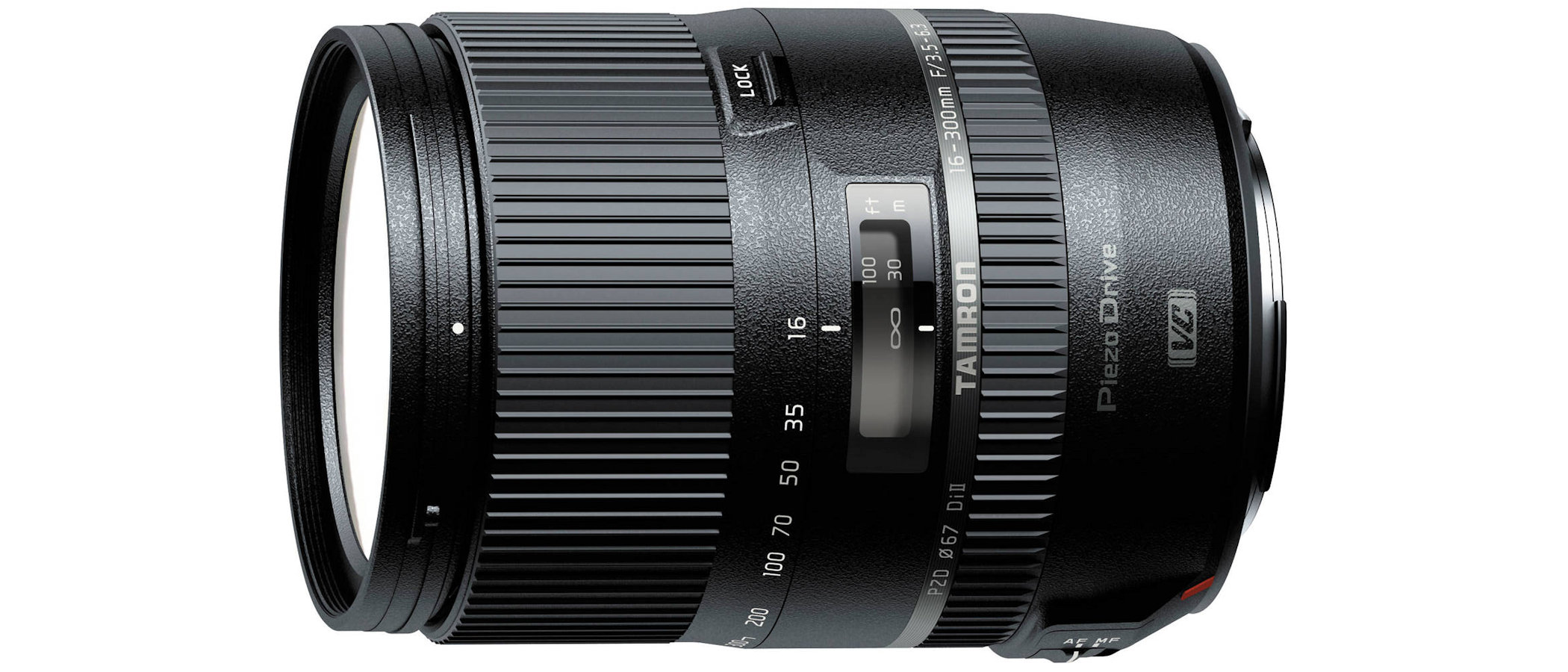Digital Camera World Verdict
This discontinued lens for Canon and Nikon APS-C format DSLRs was effectively replaced by the bigger, weightier and pricier Tamron 18-400mm f/3.5-6.3 Di II VC HLD superzoom but in many ways, we prefer the older 16-300mm. It’s size and weight are more in keeping with a travel lens, to which it’s ideally suited, and while it loses out on telephoto reach, it gives noticeably greater wide-angle coverage, equivalent to a 24mm rather than 27mm lens on Nikon cameras (25.6mm compared with 28.8mm for Canon). Image quality and all-round performance are good for a superzoom but not entirely great. All in all, it’s an attractive second-hand buy.
Pros
- +
Huge zoom range
- +
Good wide-angle coverage
- +
Nice handling
Cons
- -
Relatively poor long-zoom sharpness
- -
Hefty barrel distortion at 16mm
- -
Color fringing can be quite noticeable
Why you can trust Digital Camera World
The Tamron 16-300mm f/3.5-6.3 Di II VC PZD Macro is unusual among superzoom lenses. Most kick off with a focal length of 18mm and stretch to either 200mm or 300mm at the long end. The 2mm shorter minimum focal length might not sound like a big deal, but it delivers a noticeably bigger viewing angle, which can pay dividends in landscape photography, as well as for shooting architectural interiors and any time you want to exaggerate perspective for creative effect. With a weight of 540g, the Tamron is easily manageable and works well as a walkabout and travel lens.
Specifications
Mount: Canon EF-S, Nikon F DX
Full frame: No
Autofocus: Yes
Stabilization: Yes
Lens construction: 16 elements in 12 groups
Angle of view: 82.2-5.33 degrees
Diaphragm blades: 7
Minimum aperture: f/22-40
Minimum focusing distance: 0.39m
Maximum magnification ratio: 0.34x
Filter size: 67mm
Dimensions: 75x100mm
Weight: 540g
Key features
The lens features 16 elements in its optical path. The arrangement includes LD (Low Dispersion), XR (eXtra Refractive) and ASL (Hybrid Aspherical) elements, along with multi-coatings. Tamron’s VC (Vibration Compensation) system is also featured, which gives optical image stabilization to the tune of around 4 stops.
Build quality feels of a good standard and features a rubber weather-seal ring in the metal mounting plate. Autofocus is driven by an ultrasonic motor, rather than being of the ring-type variety. Unusually for this type of system, the focus ring remains stationery during autofocus as well as giving the option of full-time manual override, which is a definite handling bonus. It also features a focus distance scale mounted beneath a viewing panel.
Performance
At the shortest focal length of 16mm, center-sharpness is very good but it drops off noticeably at longer zoom settings. The Tamron’s edge- and corner-sharpness are less impressive throughout the entire zoom range. Lateral chromatic aberration and distortions are also rather noticeable.
Lab results
We run a range of lab tests under controlled conditions, using the Imatest Master testing suite. Photos of test charts are taken across the range of apertures and zooms (where available), then analyzed for sharpness, distortion and chromatic aberrations.
We use Imatest SFR (spatial frequency response) charts and analysis software to plot lens resolution at the center of the image frame, corners and mid-point distances, across the range of aperture settings and, with zoom lenses, at four different focal lengths. The tests also measure distortion and color fringing (chromatic aberration).
Sharpness:
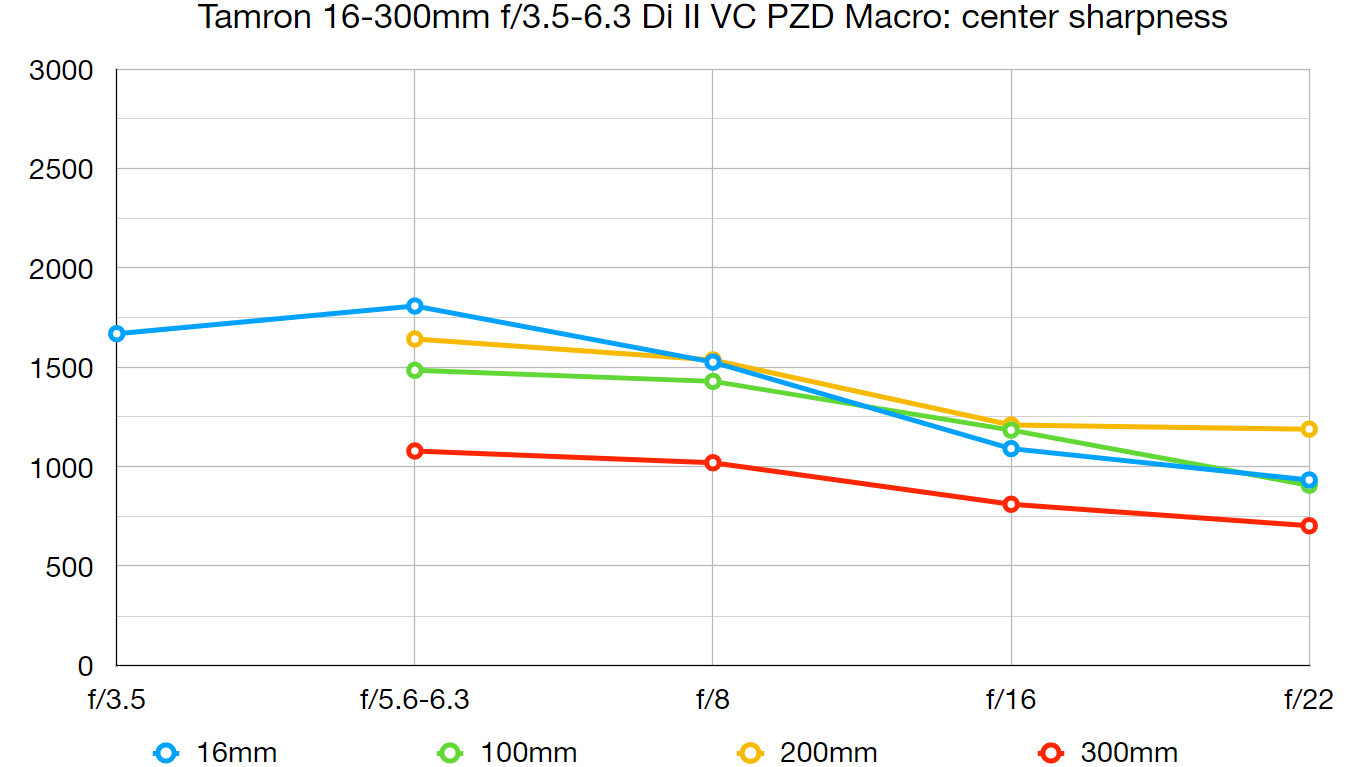
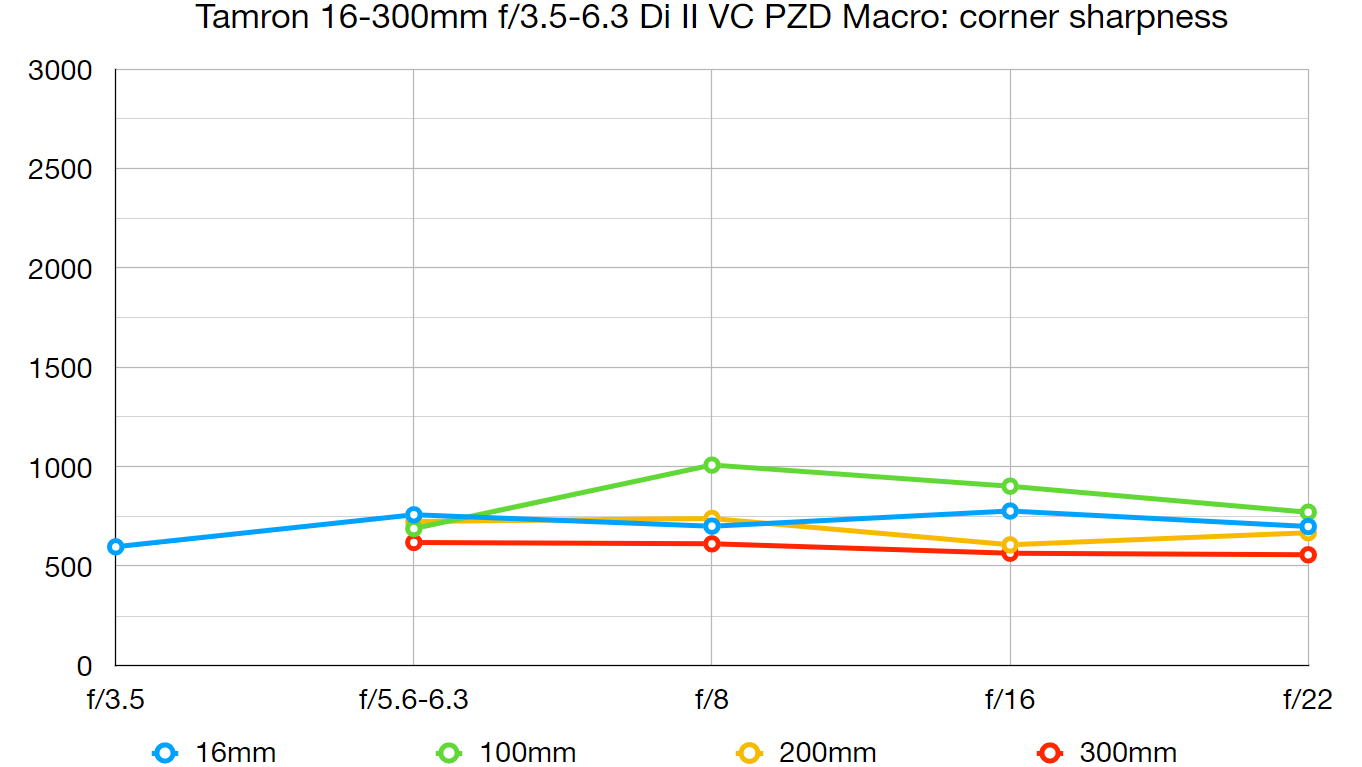
Levels of sharpness peak at 18mm and 200mm zoom settings, with a dip around 100mm and a more substantial fall-off at 300mm, where sharpness is disappointing.
Fringing:
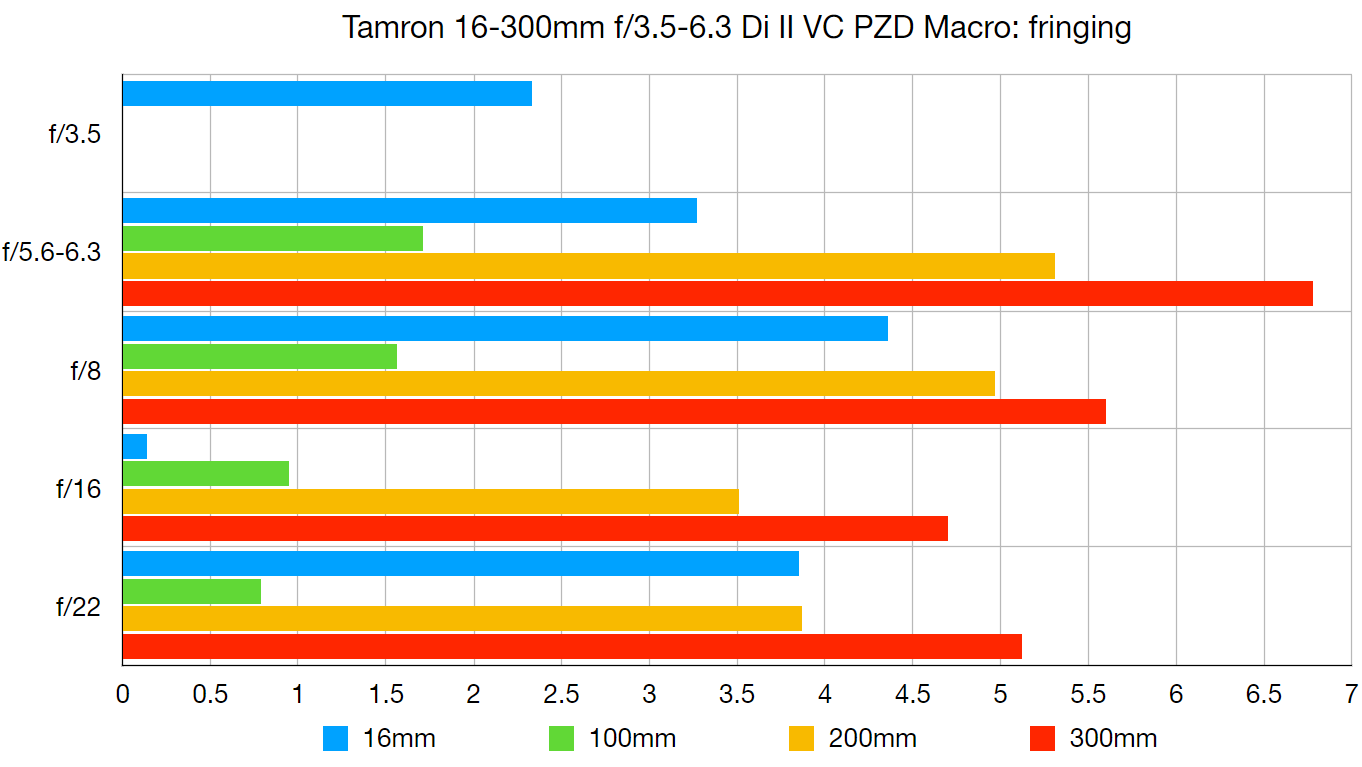
Color fringing towards the corners of the image frame can be very noticeable when uncorrected, at both ends of the zoom range.
Distortion:
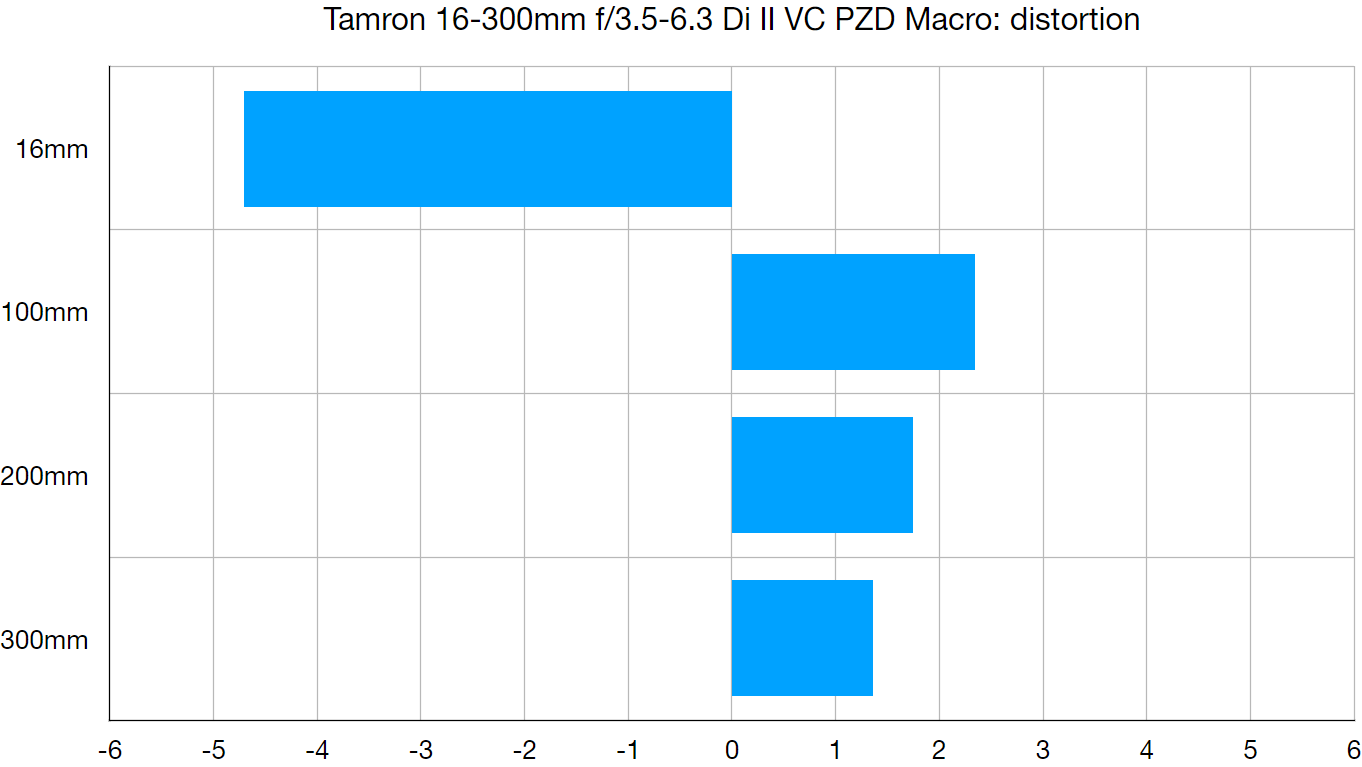
There’s fairly hefty barrel distortion at 16mm and as you stretch through the zoom range, pincushion is most noticeable in the middle sector.
Verdict
This discontinued lens for Canon and Nikon APS-C format DSLRs was effectively replaced by the bigger, weightier and pricier Tamron 18-400mm f/3.5-6.3 Di II VC HLD superzoom but in many ways, we prefer the older 16-300mm. It’s size and weight are more in keeping with a travel lens, to which it’s ideally suited, and while it loses out on telephoto reach, it gives noticeably greater wide-angle coverage, equivalent to a 24mm rather than 27mm lens on Nikon cameras (25.6mm compared with 28.8mm for Canon). Image quality and all-round performance are good for a superzoom but not entirely great. All in all, it’s an attractive second-hand buy.
Read more:
• Best camera lenses to get
• Best Canon lenses
• Best Nikon lenses
• Best Sony lenses
Matthew Richards is a photographer and journalist who has spent years using and reviewing all manner of photo gear. He is Digital Camera World's principal lens reviewer – and has tested more primes and zooms than most people have had hot dinners!
His expertise with equipment doesn’t end there, though. He is also an encyclopedia when it comes to all manner of cameras, camera holsters and bags, flashguns, tripods and heads, printers, papers and inks, and just about anything imaging-related.
In an earlier life he was a broadcast engineer at the BBC, as well as a former editor of PC Guide.
